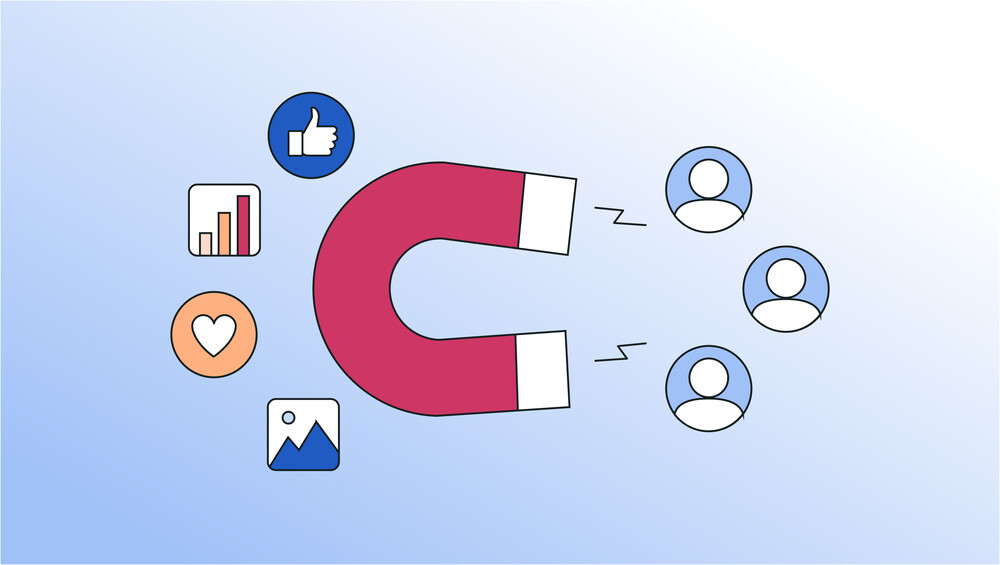Maximizing Lead Generation on Facebook and LinkedIn: A Streamlined Approach to Paid Advertising

Paid social media advertising has become an essential component of modern lead generation strategies. With billions of active users across platforms like Facebook and LinkedIn, businesses have an unprecedented opportunity to reach and engage with their target audiences. However, maximizing lead generation through these channels requires a strategic and streamlined approach to campaign setup, management, and optimization. By focusing on key elements and leveraging automation, businesses can drive qualified leads without overwhelming their resources.
Setting up Lead Generation Campaigns on Facebook and LinkedIn
The foundation of successful lead generation campaigns lies in their initial setup. Defining clear objectives and target audience profiles is crucial to ensure that campaigns are aligned with business goals and reach the right prospects. For example, a B2B software company might aim to generate leads from decision-makers in specific industries and company sizes.
Once objectives and audiences are defined, businesses must choose the appropriate campaign types and formats. On Facebook, Lead Ads are designed specifically for lead capture, allowing users to submit their information directly within the platform without leaving the app. LinkedIn offers Sponsored Content and Message Ads, which can drive traffic to landing pages or generate lead form submissions.
Crafting compelling ad copy, visuals, and calls-to-action is essential for capturing attention and inspiring action. Effective lead generation ads should resonate with the target audience's pain points, highlight key benefits, and provide a clear next step.
Developing optimized landing pages and lead capture forms is also critical. These pages should reinforce the value proposition, minimize distractions, and streamline the conversion process. Implementing tracking and conversion pixels ensures accurate reporting and attribution.
Strategies for Effective Campaign Management and Optimization
Once lead generation campaigns are set up, ongoing management and optimization are crucial for maximizing their impact and driving continuous improvement. Several key strategies can help businesses stay ahead of the curve and achieve better results.
-
Allocating Budget Based on Platform Performance and Audience Size
Effective budget allocation is essential for maximizing return on investment. Regularly analyzing performance metrics across platforms and audience segments can reveal which channels and targeting criteria are yielding the best results. Adjusting budget allocations accordingly ensures that spending is focused on the most productive areas while minimizing wasted ad spend. -
Setting Up A/B Tests for Ad Creatives, Targeting, and Placement
A/B testing, or split testing, is a powerful technique for identifying the most effective ad elements and strategies. By creating multiple variations of ad creatives, targeting parameters, and placement options, businesses can simultaneously test different combinations and gather data on their relative performance. This data-driven approach helps optimize campaigns by doubling down on top-performing elements and eliminating underperforming ones. -
Leveraging Automated Rules and Bid Strategies
Many social media advertising platforms offer advanced automation capabilities that can streamline campaign management and optimization. Automated rules allow businesses to define conditions under which specific actions should be taken, such as pausing underperforming ads, increasing budgets for high-performing campaigns, or adjusting targeting parameters.
Bid strategies, such as target cost bidding or automated bid strategies, use machine learning algorithms to automatically adjust bids based on performance goals, like maximizing conversions or maintaining a specific cost per acquisition (CPA). These strategies can help businesses achieve their desired outcomes while freeing up time and resources. -
Utilizing Retargeting to Nurture Leads and Improve Conversion Rates
Retargeting, or remarketing, campaigns serve ads to users who have previously engaged with the brand, such as visiting the website or interacting with social media content. These campaigns can be highly effective for nurturing leads and guiding them through the sales funnel by delivering targeted messaging and offers based on their level of engagement.
Businesses can leverage various retargeting strategies, such as website visitor retargeting, email list retargeting, and engagement-based retargeting, to stay top-of-mind and move prospects towards conversion. -
Monitoring and Adjusting Campaigns Based on Key Metrics and Insights
Continuous monitoring and adjustment are essential for maintaining campaign effectiveness and efficiency. Regularly reviewing key metrics, such as click-through rates (CTRs), cost per lead (CPL), conversion rates, and return on ad spend (ROAS), can provide valuable insights into campaign performance.
Based on these insights, businesses can make data-driven decisions to pause underperforming campaigns, reallocate budgets, refine targeting, or update ad creatives. Additionally, analyzing audience data, such as demographics, interests, and behaviors, can inform more effective targeting strategies and messaging.
By implementing these strategies for effective campaign management and optimization, businesses can stay agile, maximize the impact of their social media advertising efforts, and continuously improve their lead generation results.
Minimum Requirements for Maintaining Facebook and LinkedIn Presence
Beyond paid advertising, maintaining a consistent brand presence on Facebook and LinkedIn is essential for supporting lead generation efforts and nurturing relationships with prospects and customers.
Establishing a consistent brand voice and visual identity across platforms helps build recognition and credibility. Developing a content calendar with a mix of promotional and value-added posts, such as industry insights, thought leadership, and customer success stories, helps keep audiences engaged.
Scheduling and automating content publishing using third-party tools can streamline the process and ensure a consistent cadence. Engaging with audience comments, messages, and interactions regularly fosters trust and strengthens relationships.
Monitoring and responding to brand mentions, reviews, and customer inquiries promptly demonstrates excellent customer service and can turn potential detractors into advocates.
Measuring and Reporting on Lead Generation Performance
Accurate measurement and comprehensive reporting are essential for evaluating the success of lead generation campaigns and informing future strategies. By tracking the right metrics and leveraging in-depth analytics, businesses can gain valuable insights into campaign performance, audience behavior, and overall return on investment.
-
Defining Key Performance Indicators (KPIs) for Lead Quantity and Quality
Before launching campaigns, it's crucial to define clear key performance indicators (KPIs) that align with business objectives. For lead generation, KPIs may include the number of leads captured, cost per lead (CPL), lead-to-customer conversion rate, and lead quality scores based on factors like job titles, company size, or industry. -
Tracking Lead Source Attribution and Conversion Rates Across Platforms
To accurately assess the effectiveness of different channels and campaigns, businesses must track lead source attribution across platforms. This involves implementing proper tracking mechanisms, such as UTM parameters and conversion pixels, to determine which campaigns and sources are driving the most qualified leads and conversions. -
Analyzing Audience Demographics, Behaviors, and Interests for Targeting Insights
In addition to tracking lead sources, analyzing audience data can provide valuable insights for optimizing targeting strategies. By examining demographics, interests, behaviors, and engagement patterns of high-value leads and customers, businesses can refine their targeting criteria and develop more effective messaging. -
Calculating Return on Ad Spend (ROAS) and Cost per Lead (CPL) Metrics
To evaluate the overall efficiency and profitability of lead generation campaigns, businesses should calculate key metrics like return on ad spend (ROAS) and cost per lead (CPL). ROAS measures the revenue generated for every dollar spent on advertising, while CPL indicates the average cost of acquiring a new lead. -
Presenting Performance Reports and Recommendations to Stakeholders
Regular reporting and collaboration with stakeholders are essential for maintaining alignment and making data-driven decisions. Comprehensive performance reports should include key metrics, campaign performance analysis, audience insights, and recommendations for optimization and future strategies.
These reports should be tailored to different stakeholder groups, such as marketing teams, sales teams, and executive leadership, providing relevant insights and actionable recommendations for each audience.
By implementing a robust measurement and reporting framework, businesses can effectively evaluate the success of their lead generation efforts, identify areas for improvement, and make informed decisions to maximize their return on investment from social media advertising campaigns.
Adapting to Platform Updates and Best Practices
Social media platforms are constantly evolving, with new features, policies, and algorithm changes introduced regularly. Staying informed about these updates is crucial for maintaining effective lead generation strategies.
Attending webinars, conferences, and training sessions for social media marketers can provide valuable insights and best practices. Experimenting with new ad formats, targeting options, and creative strategies can uncover fresh opportunities for engagement and conversion.
Collaborating with industry peers and learning from successful case studies can inspire new approaches and tactics. Continuously testing and iterating on campaigns based on performance data ensures that strategies remain current and effective.
In today’s competitive landscape, maximizing lead generation on Facebook and LinkedIn requires a strategic and streamlined approach to paid advertising. By focusing on key campaign elements, automating processes, and maintaining a consistent presence, businesses can drive qualified leads while efficiently managing their social media advertising efforts.
If you’re looking to unlock the full potential of paid social media advertising for your business, reach out to the experts at WebTech Services.
Our team of digital marketing specialists can craft a tailored strategy, set up and manage high-performing campaigns, and provide ongoing optimization to maximize your return on investment. Contact us today to schedule a consultation and take your lead generation efforts to new heights.
About the Author
Rob May
Paid Advertising Specialist
With 20-years of experience in digital marketing, Rob is an expert who has driven business growth on Main Street and Wall Street through successful SEO, paid ads, and content strategies.
